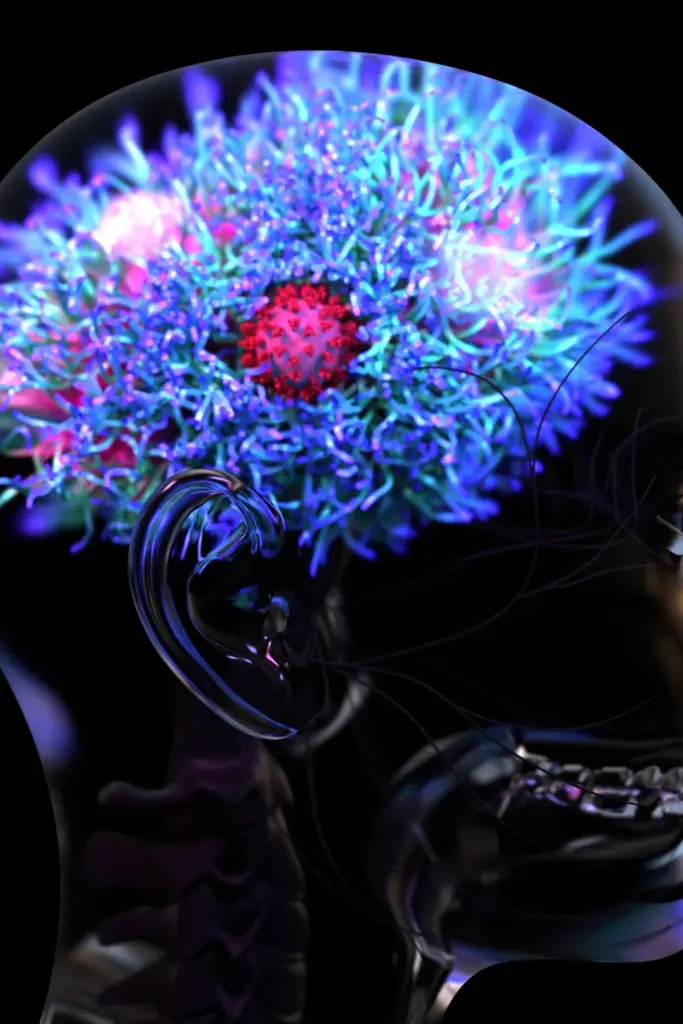When alcohol leaves the system unaided by a medical detox protocol, it can trigger a devastating cascade in the brain. Delirium tremens kills up to 37% of untreated cases.
Delirium Tremens (DTs) and metabolic encephalopathy — both might sound like something straight out of a medical textbook. But for those struggling with alcohol addiction or supporting a loved one in recovery, they’re life-altering conditions that demand immediate attention.
The question “Are delirium tremens considered metabolic encephalopathy?” is significant because it highlights the complex interplay between alcohol withdrawal and systemic brain dysfunction.
Let’s break down what you need to know about DTs, metabolic encephalopathy, and how to manage these conditions with care, empathy, and expertise.
Looking for immediate help? Contact our rehab in Midland, Texas to explore your options.
Are Delirium Tremens Considered Metabolic Encephalopathy?: Understanding Delirium Tremens (DTs)
Let’s first break down and understand Delirium Tremens.
Delirium Tremens, often abbreviated as DTs, doesn’t happen to everyone who stops drinking, but for those at risk, it’s a true medical emergency.
Delirium tremens (DTs) is a severe and potentially life-threatening condition that occurs as a complication of alcohol withdrawal in people with alcohol dependence. It typically develops 48-72 hours after the last drink and is characterized by the following “DT” symptoms:
- Severe confusion and disorientation
- Hallucinations (usually visual)
- High fever
- Seizures
- Severe tremors
- Extreme agitation
- Rapid heart rate and high blood pressure
We’ll explore these a bit more in-depth a little later.
DTs typically occur in individuals who have been drinking heavily for years and suddenly stop or dramatically reduce their intake.
What makes DTs particularly dangerous is how quickly symptoms can escalate. Within 48 to 96 hours after the last drink, people may experience everything from tremors to seizures.
Without proper medical care, the condition can spiral into cardiovascular collapse or death. For those wondering, “Are delirium tremens considered metabolic encephalopathy?” it’s important to note that while DTs arise from alcohol withdrawal, metabolic encephalopathy stems from systemic imbalances, but the two can overlap.
The answer lies in the brain’s desperate attempt to restore balance after years of suppressing its natural excitatory functions to accommodate alcohol’s depressive effects.
Before we go into metabolic encephalopathy, let’s break down the DT symptoms a little more.
Common Symptoms of Delirium Tremens

Early recognition of DTs is essential for timely medical intervention. Symptoms are both physical and psychological, making them all the more challenging to manage without professional help.
Severe Confusion and Hallucinations
One of the hallmark symptoms of DTs is severe confusion, often accompanied by vivid, frightening hallucinations. People might see, hear, or feel things that aren’t real.
These can cause panic, paranoia, and dangerous behavior. This confusion stems from the brain’s hyperactive state as it struggles to regain equilibrium.
In some cases, untreated DTs can progress to Wernicke encephalopathy, a serious neurological condition caused by a severe vitamin B1 deficiency. Without immediate care, hallucinations can lead to self-harm or harm to others, making it crucial to seek medical attention at the first sign.
Related: Cured vs Recovered: Why Language Matters in Recovery
Tremors and Physical Agitation
DTs often manifest physically through uncontrollable shaking, also known as tremors.
The tremors can be so severe that holding objects or even standing becomes impossible. Coupled with physical agitation, such as pacing or restlessness, these symptoms indicate the nervous system is firing on all cylinders, further stressing the body.
Cardiovascular Changes
Alcohol withdrawal impacts the heart more than you might think. People with DTs may experience rapid heart rate, irregular rhythms, or dangerous spikes in blood pressure.
Left unchecked, these cardiovascular changes can lead to severe complications, including heart attacks or strokes. Hospital management DTs typically involves stabilizing the patient’s vitals, administering sedatives, and monitoring for complications like seizures or cardiac issues. Medical monitoring during this stage is non-negotiable.
The Springboard Center has a medical detox program that helps patients work through these serious withdrawal symptoms.
Changes in Mental Status
Delirium Tremens takes a significant toll on mental clarity. Beyond confusion and hallucinations, patients may experience disorientation, memory loss, or difficulty focusing. In severe cases, they might become completely unresponsive or fall into a coma.
Risk Factors
Not everyone who drinks heavily will experience DTs, but certain risk factors significantly increase the likelihood. Identifying these can help individuals and families take preventive steps before withdrawal begins.
History of Heavy Alcohol Use
A long-term pattern of heavy drinking is one of the strongest predictors of DTs. Years of alcohol dependency alter the brain’s chemistry, making it difficult for the body to adjust when alcohol is removed.
Chronic alcohol abuse can lead to alcohol-induced brain damage, compounding the risks of developing conditions like DTs or metabolic encephalopathy. The longer and heavier the drinking history, the higher the risk.
Previous Episodes of Withdrawal
If someone has experienced withdrawal symptoms in the past — even mild ones — they’re more likely to face severe symptoms during future detox attempts. This phenomenon, known as kindling, underscores the importance of professional intervention during every withdrawal episode.
Co-existing Medical Conditions
Underlying health problems, such as liver disease or malnutrition, can exacerbate the risks of DTs. Metabolic disorders, such as diabetes or liver disease, can further compromise the body’s ability to cope with the stress of withdrawal, making holistic medical care even more critical.
What Is Metabolic Encephalopathy?
Unlike structural brain damage, which is permanent, metabolic encephalopathy is often reversible with proper treatment. It’s a catch-all term for brain dysfunction stemming from metabolic imbalances, such as liver failure, kidney failure, or severe electrolyte disturbances.
Metabolic encephalopathy is a temporary or permanent impairment of brain function caused by systemic metabolic dysfunction or organ failure that disrupts normal brain chemistry.
Clinicians addressing the question, “Are delirium tremens considered metabolic encephalopathy?” often focus on how alcohol withdrawal and systemic imbalances contribute to brain dysfunction.
In many ways, metabolic encephalopathy and DTs share common ground: both are systemic issues with neurological consequences. Understanding the overlap can help tailor treatment plans that address the root causes rather than just the symptoms.
Related: What Does Fentanyl Smell Like? Critical Facts for Loved Ones
Types of Metabolic Encephalopathy

Several forms of metabolic encephalopathy can impact individuals with chronic alcohol use or related health conditions.
Here are two of the most common types:
Hepatic Encephalopathy
This form of encephalopathy arises when the liver can’t effectively filter toxins from the blood. The buildup of substances like ammonia can cross the blood-brain barrier, causing confusion, lethargy, and even coma.
Alcohol abuse is a major contributor to liver dysfunction, making hepatic encephalopathy a common concern for those with alcohol-related health issues.
Uremic Encephalopathy
Kidney failure can also trigger encephalopathy by allowing waste products to accumulate in the body. This condition can lead to mental cloudiness, seizures, or muscle twitches. Dialysis or other treatments aimed at restoring kidney function can help reverse these symptoms.
Causes and Triggers
Both DTs and metabolic encephalopathy share several triggers, many of which overlap with chronic alcohol use.
Electrolyte Imbalances
Alcohol disrupts the body’s natural balance of electrolytes like potassium, magnesium, and calcium. These minerals are vital for nerve and muscle function, and their depletion can lead to severe neurological symptoms. Hydration and nutritional support are key components of treatment.
Organ Dysfunction
Liver and kidney problems, common in individuals with chronic alcohol use, significantly increase the risk of both DTs and metabolic encephalopathy. These organs play a crucial role in detoxifying the body, and their failure can lead to toxin buildup, worsening symptoms.
Toxic Exposures
Whether from alcohol or environmental toxins, prolonged exposure to harmful substances takes a toll on the brain and body. Detoxification and supportive care can help mitigate these effects and restore balance.
Explore Prevention and Long-term Recovery with The Springboard Center
Effective treatment for delirium tremens and metabolic encephalopathy both involve medical detoxification, close monitoring, and addressing underlying health issues to ensure a full recovery.
With a focus on evidence-based practices and holistic healing, The Springboard Center empowers individuals to overcome addiction and reclaim their lives. Whether you’re dealing with the immediate crisis of DTs or looking to prevent metabolic complications, our team is here to help every step of the way.
Explore our residential program, intensive outpatient program, and sober living facility, or contact us now to start your or your loved one’s journey to recovery.




